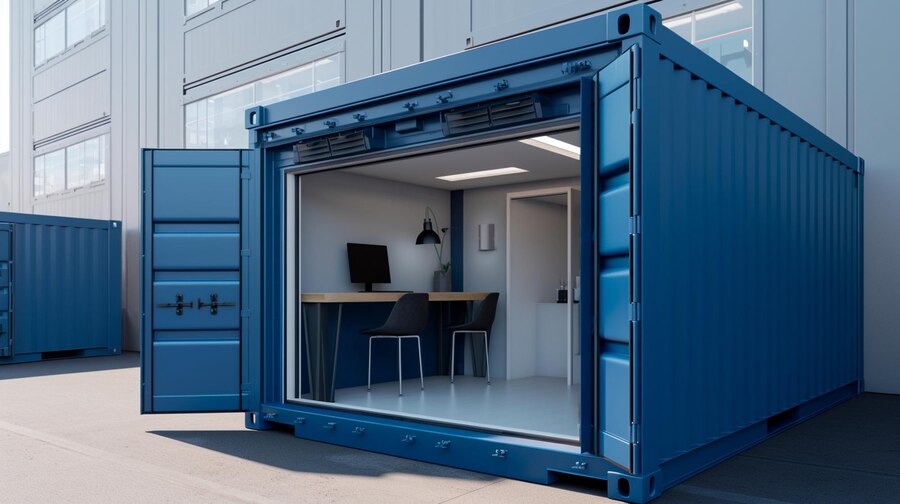Understanding The Role Of Web Design Companies In Building Brand Identity

Web design has emerged as a key element in creating robust brand identities in today’s digital era. Businesses looking to make a mark among internet audiences require a perfect blend of aesthetics, usability, and content. With the right web design company, it’s possible to craft a unique online presence that translates into a memorable brand.
In essence, web design is a fine balance between aesthetics, functionality, and content. For instance, a website design company in Chicago exclusively emphasizes harmonizing these elements to enhance brand identity. Keep reading to better understand how web design companies play a significant role in building brand identities.
Why Brand Identity Is Important In Business
Brand identity is one tool that helps a business stand tall in the ambience of high competition. A company attains an intangible asset by providing persistent product quality and services. Brand identity is important mainly because it helps businesses retain dedicated customers and increase sales in the long run. However, we try to understand why it is a dire need for a business, irrespective of the scale.
Communicating The Essence Of Business
Brand identity is something that helps you stay ahead in business. With the help of it, you can communicate your passion, values, and dedication towards service to the customers. A company can easily stay competitive if it successfully establishes its brand value before the customers. Moreover, brand value establishes the companies’ seriousness in the market.
Competitive Edge
As we discussed, the present business ecosystem is highly competitive. If you fail to establish yourself in the competitive market, then you will not be able to stand tall in the ambience of competition. But with the help of a competitive edge, one can perform better.
The Pertinence of Web Design in Enhancing Brand Identity
The influence that a website design has on the overall image of a brand cannot be understated. From the choice of colours and fonts to the user interface, each element has a role to play in rendering an image in the visitor’s mind. Web design doesn’t only account for attractiveness. It also involves the seamless integration of functionalities and features.
Finding a Connection: Web Design and Brand Identity
Companies need to understand that web design and brand identity are intrinsically linked. A brand is not merely a logo or a tagline but the entire experience that a company provides to its customers. In the digital platform, this experience is largely influenced by web design.
Maintaining consistency in web design elements such as color schemes, logos, and fonts across all digital platforms establishes a clear brand identity. Consistency reinforces brand recognition and grants an element of professionalism to the business.
Web design also plays a pivotal role in communicating the brand’s message. The visual elements and the overall look and feel of the website must reflect the core ideas the brand represents. This can include values like trust, innovation, quality, and so on.
A well-designed website not only captures the essence of the brand but also differentiates it from its rivals. It leaves an indelible imprint on the visitors, thereby building a strong brand identity.
The Strategy: Web Design Agencies Working for Your Brand
Given the impact of web design on brand identity, the need for a professional and skilled web design agency becomes vital. These companies have the experience and expertise to translate the ethos of the brand into a compelling and user-friendly website.
Web design companies start by understanding the essence of the brand, its mission, values, and the audience it caters to. They then use this information to create a design that accurately represents the brand.
These agencies employ a multifaceted approach which includes creating a visually appealing layout, integrating user-centered design, ensuring mobile compatibility, and optimizing the website for search engines.
With their detailed and holistic approach, these agencies can incorporate the subtleties of the brand into the website design, therefore aiding in building a comprehensive brand identity.
Related: The Rise Of Interactive Email Strategies In Modern Brand Campaigns
How Your Organization Cand Directly Benefit From Web Designing Company
The web designing companies are professionals who can help you provide the best solution to your needs. They constantly work on your website and make it seo friendly. It is an important aspect to stay competitive in the market. Here, we try to understand the need for web designing companies’ services for your company. So, let us get started with the discussion.
Design And Aesthetics
Professional web design solutions are masters in their realm. They can work on your website and deck it with the best graphics and other aspects of aesthetics. Remember, your business website must be easy to use. It reduces the bounce rate on your website. The professionals overseeing the website development consider each and every aspect of the product.
Responsiveness
Website designing is all about responsiveness and reliability. Most consumers access your website via a mobile device rather than a laptop. Therefore, the design of your website must be so organized that it provides ease to the customers. This is the job of professionals to help you out.
Seo Friendly
Your website must adopt new technology, and at the same time, it must be SEO-friendly. It will go on to increase the trust factor of your website. With the help of your website, you can benefit from the persistent support. Interacting with a highly professional website designing company can help you serve your needs.
Making an Impact: How Good Web Design Propels Brand Recognition
An aesthetically pleasing and easy-to-navigate website is much more likely to resonate with users, which assists in boosting brand recognition. Every element of the website, from color and typography to layout and interface, contributes towards creating a brand memory in the user’s mind.
Good web design enables brands to communicate their unique attributes and values subtly but effectively. By imparting a superior user experience, good web design solidifies brand placement in the consumer’s mind.
Altogether, effective web design plays a critical role in building a strong, cohesive, and consistent brand identity. With a professional web design company on your side, you can ensure to render a remarkable online presence that resonates with your brand’s mission and values.
Read Also:













